Cumberland Rosinweed - Silphium brachiatum
|
Silphium brachiatum - Cumberland Rosinweed. There is a lot of disagreement on the circumscription of Silphium. As originally described by Linnaeus it had only 5 species. In 1933 Small described 33 species, but in 1937 Perry described the genus with only 23 species. Cronquist described 15 species in 1980. Silphium wasiotense was added to Cronquist's list in 1989 by Medley. Clevenger and Panero performed molecular, DNA, and morphological studies at the end of the 20th century and wound up with only 11 species, with Clevenger adding 1 in 2006 for a total of 12, which is the number described in Flora of North America. However, other authorities continue to recognize a much larger number of species (some of which are recognized instead as varieties in the Clevenger and Panero circumscription), and with the flux, Alan S. Weakley says the genus has 20 to 30 species; I prefer the larger number.
Silphium brachiatum is a rare species of Rosinweed found only in a few counties in the southern Cumberland Plateau of Tennessee and Alabama (some reports say it is also in Georgia, but I have not found any confirmation.) It apparently has only the one common name - Cumberland Rosinweed - since it is so rare. It was first described (and named) by Augustin Gattinger, Tennessee's first state botanist.
Found in:
AL, GA, TN
Leave comments on Silphium brachiatum at this link. | 
Distribution of Silphium brachiatum in the United States and Canada:
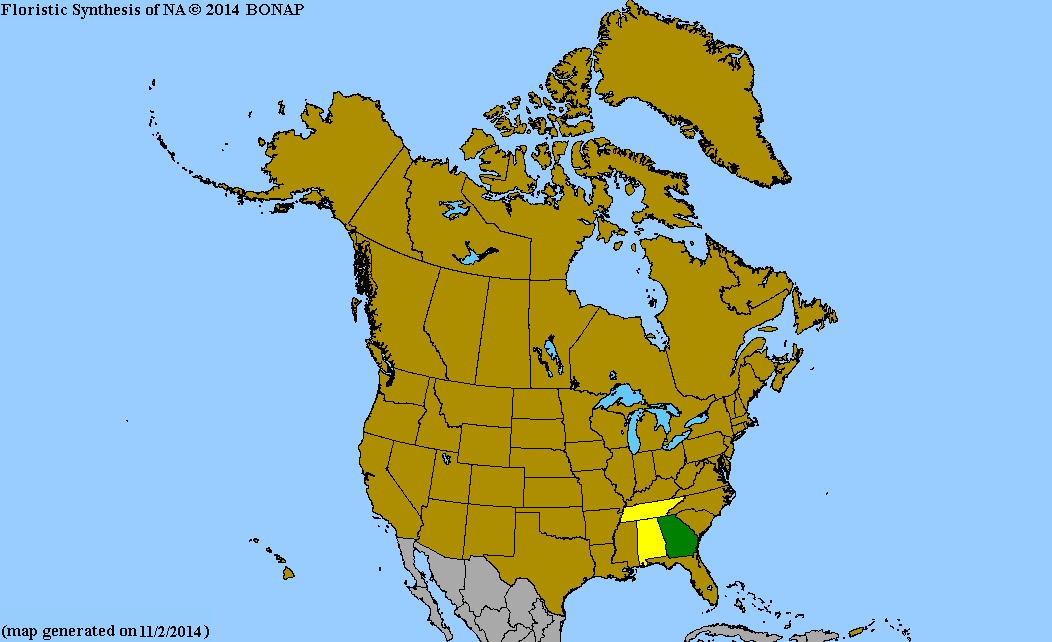
Map courtesy of The Biota of North America Program.
Map color key
Search Our Database: Enter any portion of the Scientific, Common Name, or both.
Do a general Google search of the entire site:
#ad
 Follow USWildflowers on Twitter
#ad
| | Site: Hawkins Cove Natural Area, Franklin County, TN Date: 2016-August-13 | Photographer: Gerald C. Williamson
Nikon D7000
Tamron SP 90MM f/2.8 AF Macro | | The yellow flowering heads of Cumberland Rosinweed are relatively small, generally around an inch to an inch and a half across. There are relatively few ray flowers; some descriptions say 4 to 6, others say 7 to 9. Most of the plants I observed had 5 to 8 ray flowers. The involucre bracts are glabrous with ciliate margins. | | 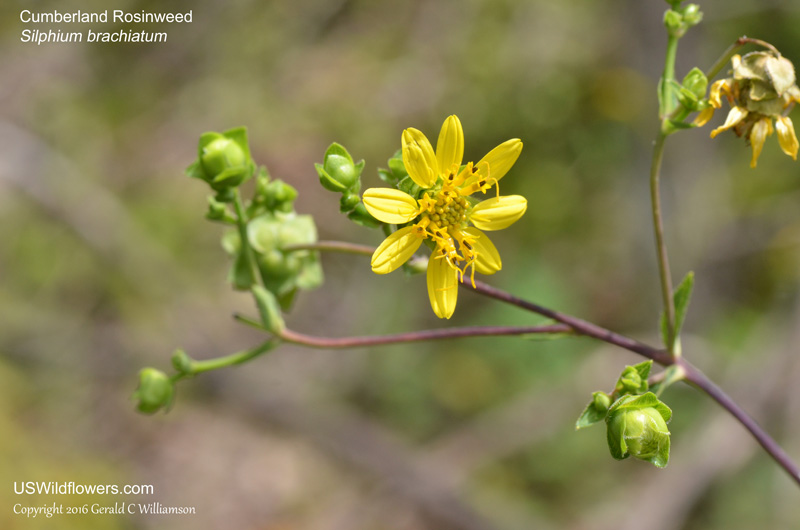
| | Site: Hawkins Cove Natural Area, Franklin County, TN Date: 2016-August-13 | Photographer: Gerald C Williamson
Nikon D7000 | | The inflorescence of Silphium brachiatum is quite open, with the usually many flowering heads on smooth pedicels. The peduncle is also glabrous, matching the stem. | | Click on the photo for a larger image
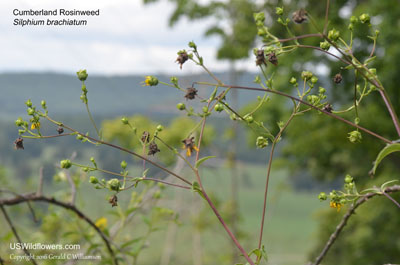
| | Site: Hawkins Cove Natural Area, Franklin County, TN Date: 2016-August-13 | Photographer: Gerald C Williamson
Nikon D7000 | | While there are basal leaves, they and the lowest stem leaves are usually withered by the time the plant flowers. The stem is quite leafy, with opposite leaves rising to the inflorescence, with only the highest becoming significantly reduced in size. The leaves are on hairy petioles, but the stem is glabrous, frequently glaucous. While a flowering plant may only be 2 or 3 feet tall, they can grow to 6 or more feet tall. | | Click on the photo for a larger image
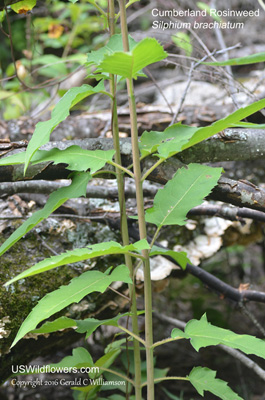
| | Site: Hawkins Cove Natural Area, Franklin County, TN Date: 2016-August-13 | Photographer: Gerald C Williamson
Nikon D7000 | | The leaf shape is variable, but the lower leaves particularly have a more distinct shape which makes identification of the species easier - the bases are truncate, not rounded, perhaps cordate at the petiole. In many cases the lowest leaves will be hastate, what are coarse teeth on the rest of the leaf margins are a pair of lobelike teeth at the base of the leaf. Again, note the hairy petiole in contrast to the glaucous stem. | | Click on the photo for a larger image
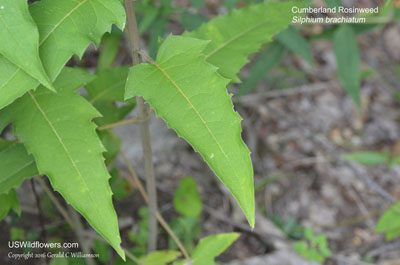
| | Site: Hawkins Cove Natural Area, Franklin County, TN Date: 2016-August-13 | Photographer: Gerald C Williamson
Nikon D7000 | | The upper leaves, while displaying the same vein structure as the lower leaves, will also have some coarse teeth. They may also have a more cuneate base rather than the hastate, cordate, or truncate bases of the lower leaves. I have observed what I believe to be younger plants having the cuneate leaves all the way down to the withered lowest leaves, and some of the specimens collected in at least Alabama . The upper leaf surfaces are scabrous, feeling almost like sandpaper. The lower surface is scabrous or somewhat stiffly hairy. | | Click on the photo for a larger image
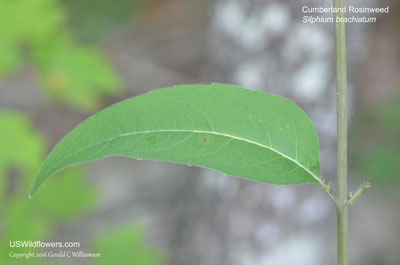
|
References used for identification and information:
|
|
| |
| #ad
|
|







